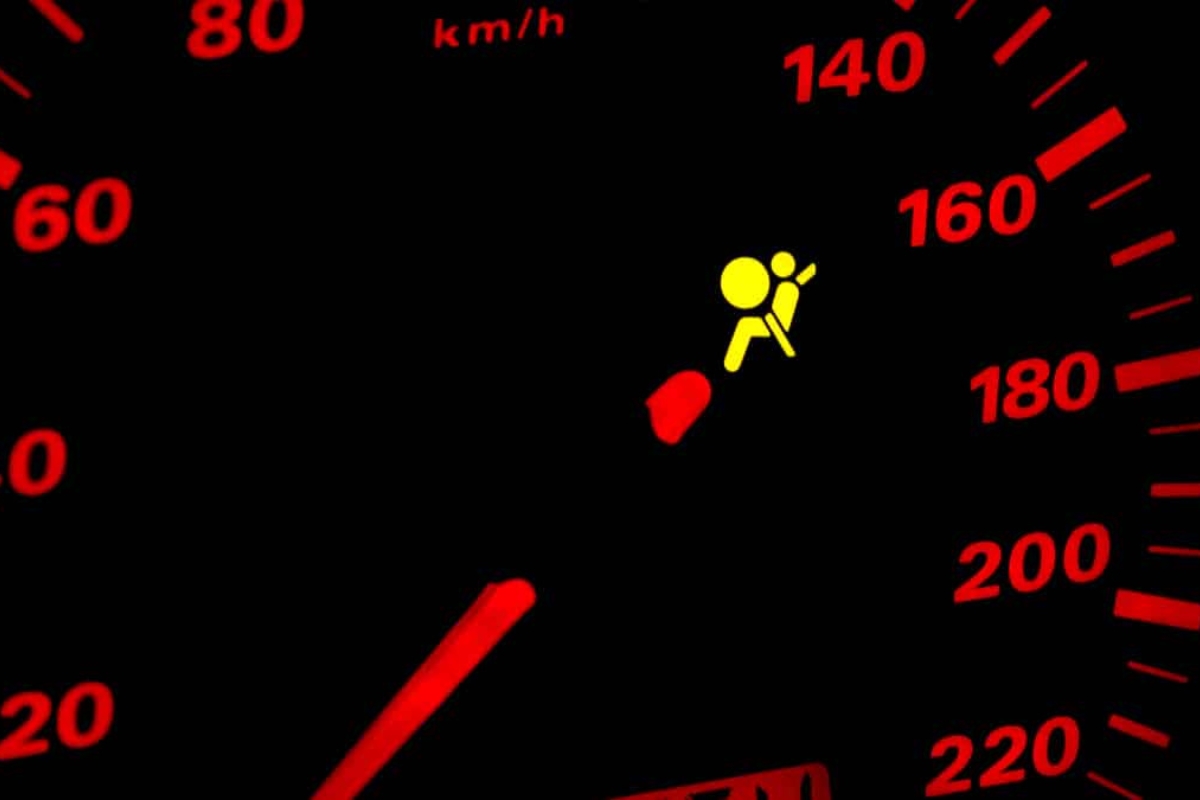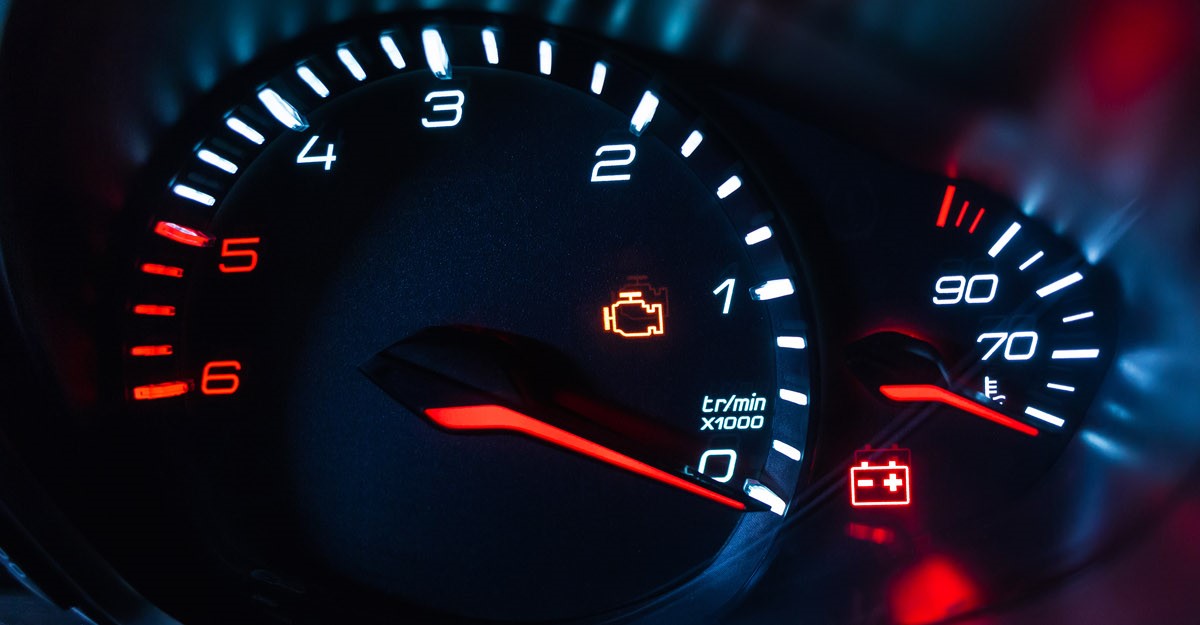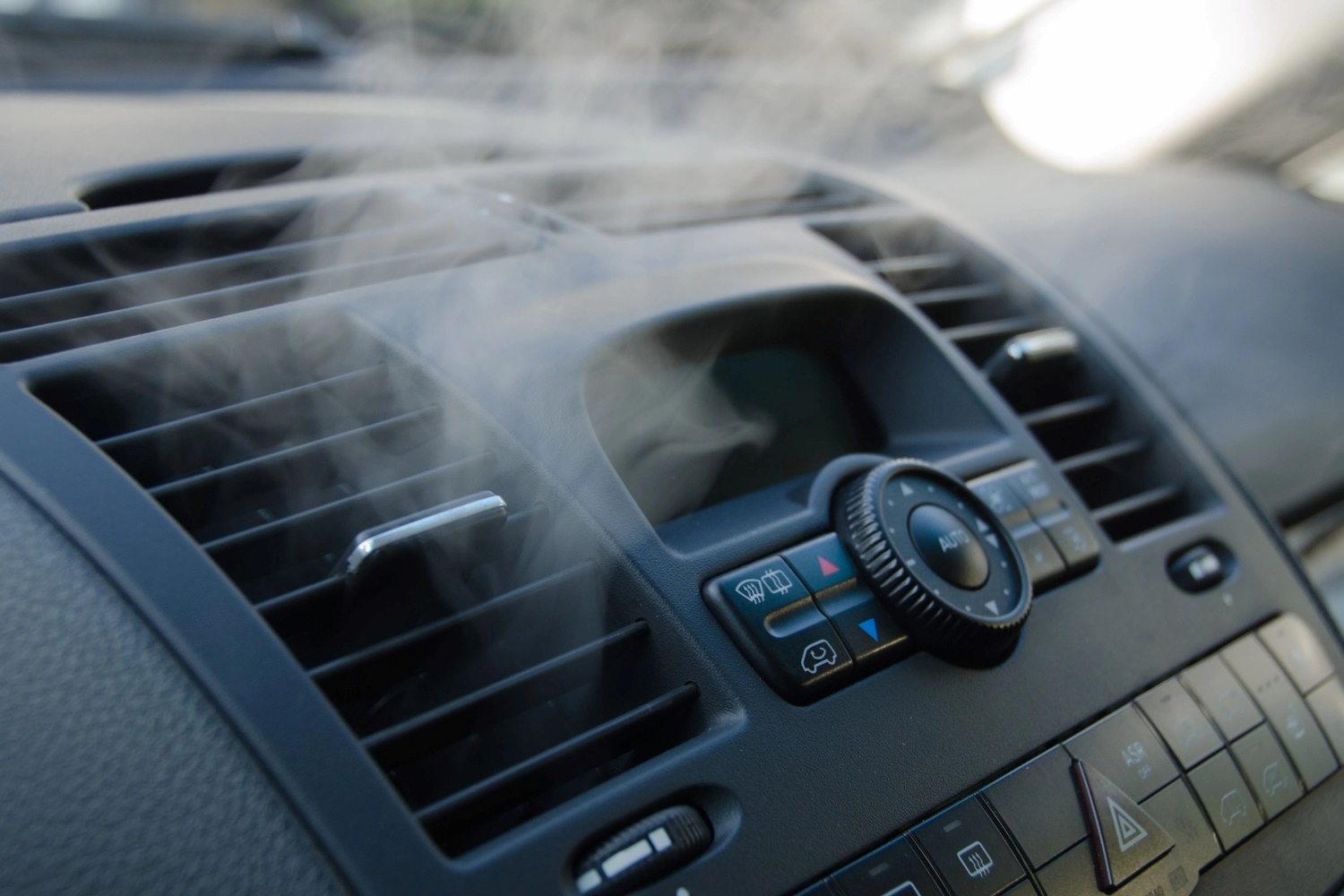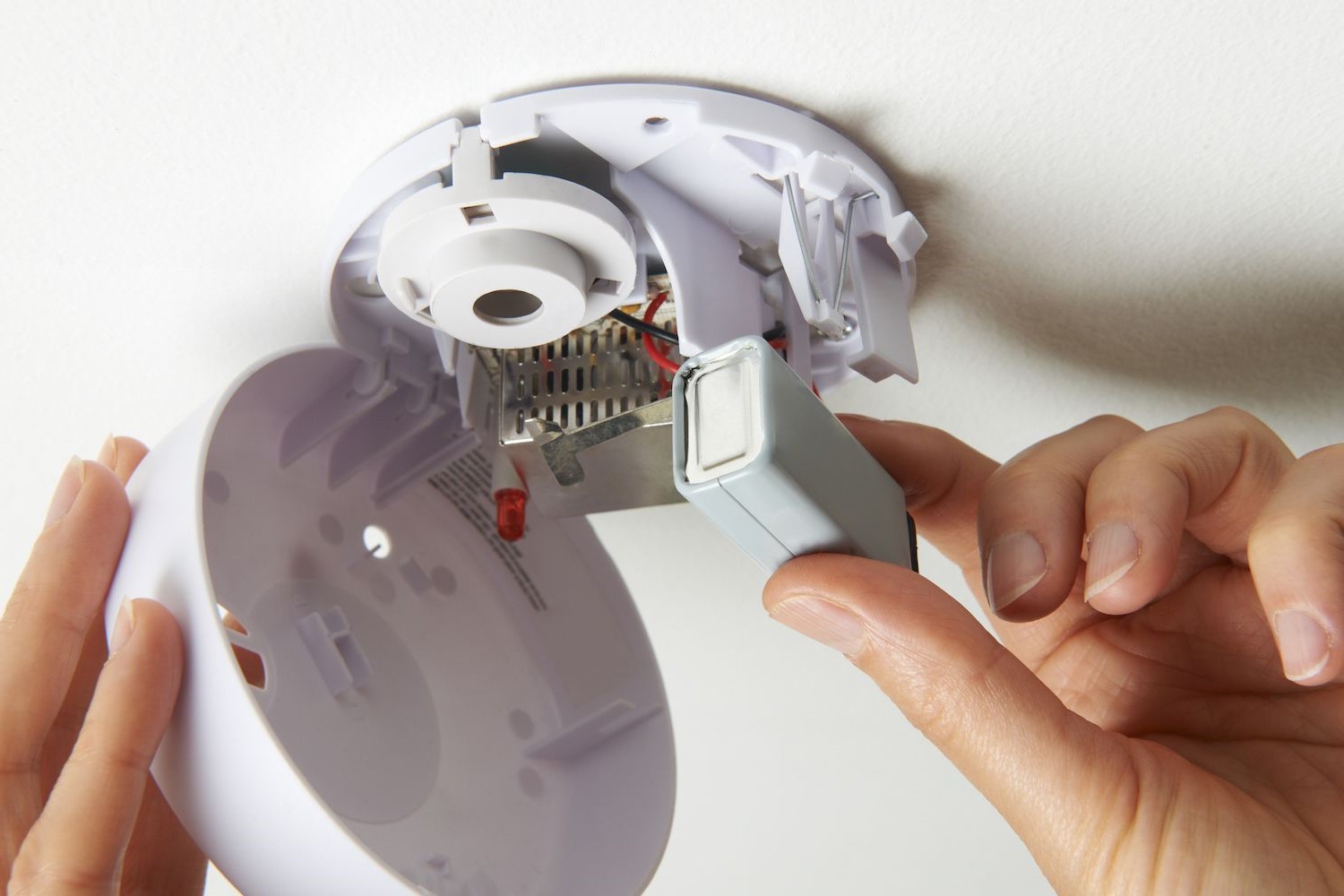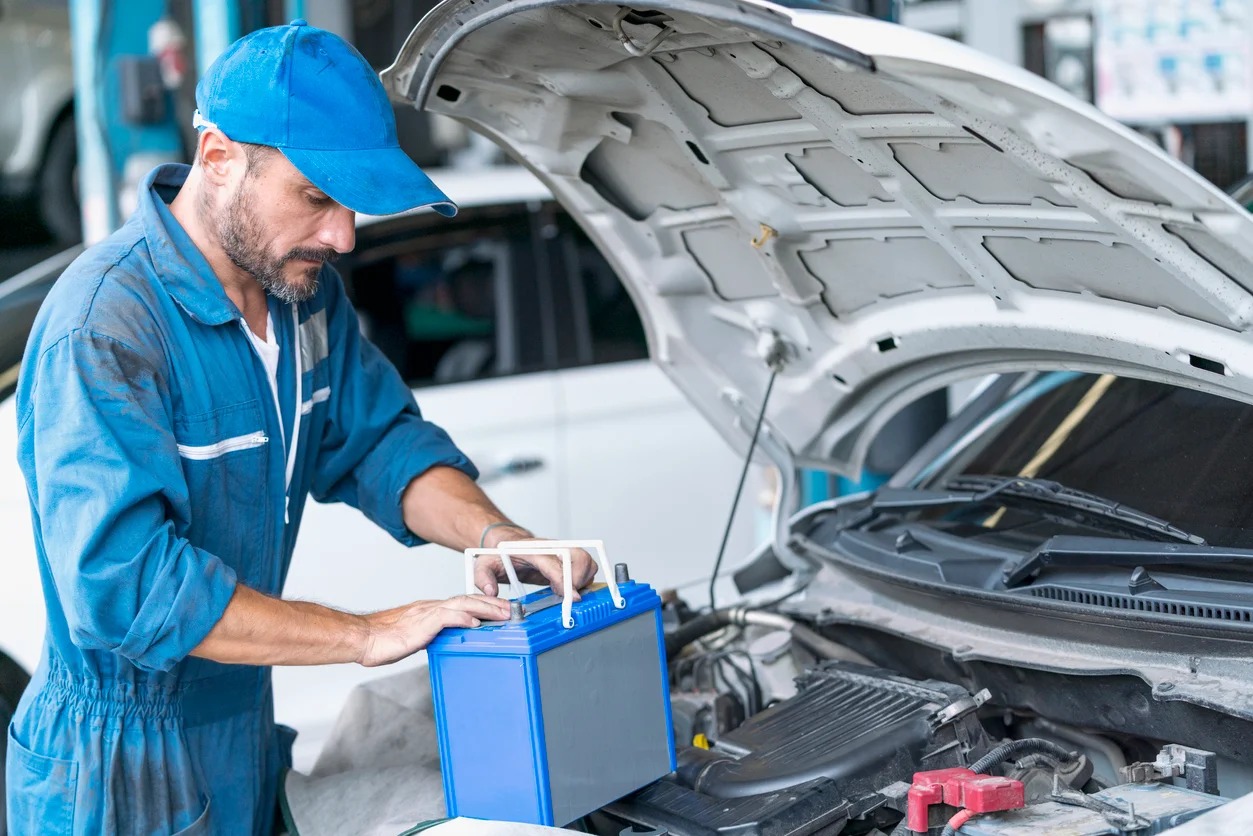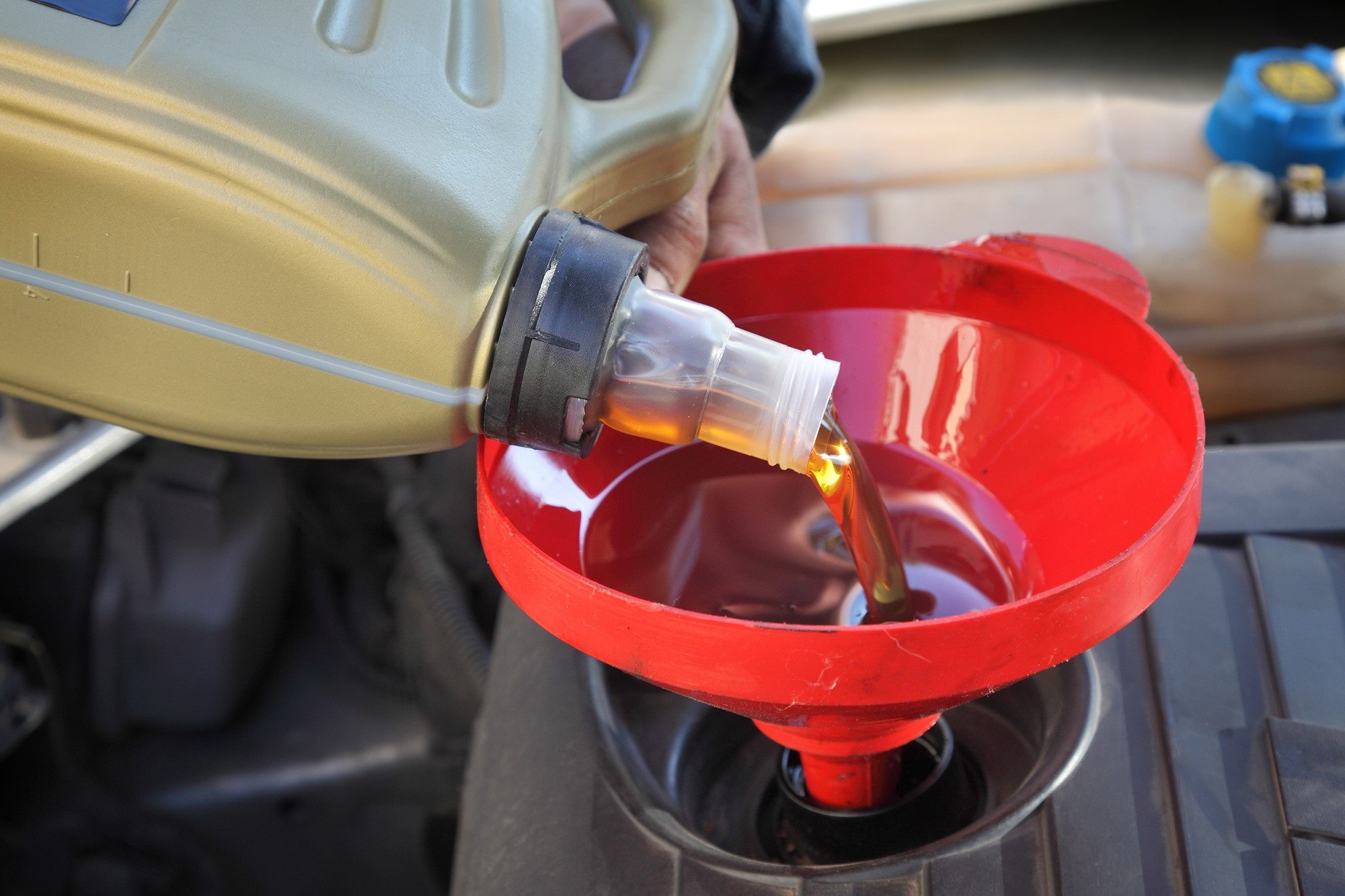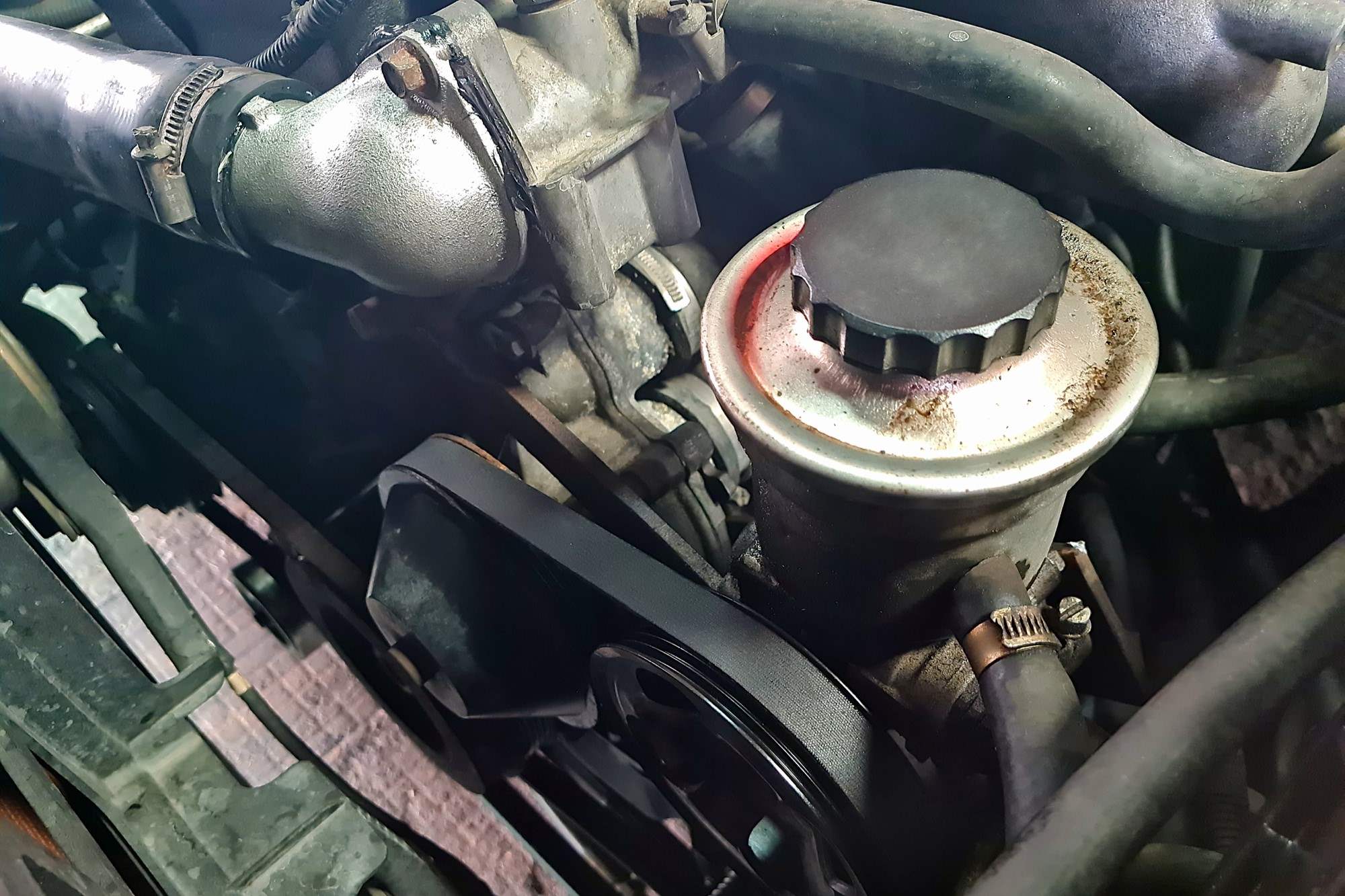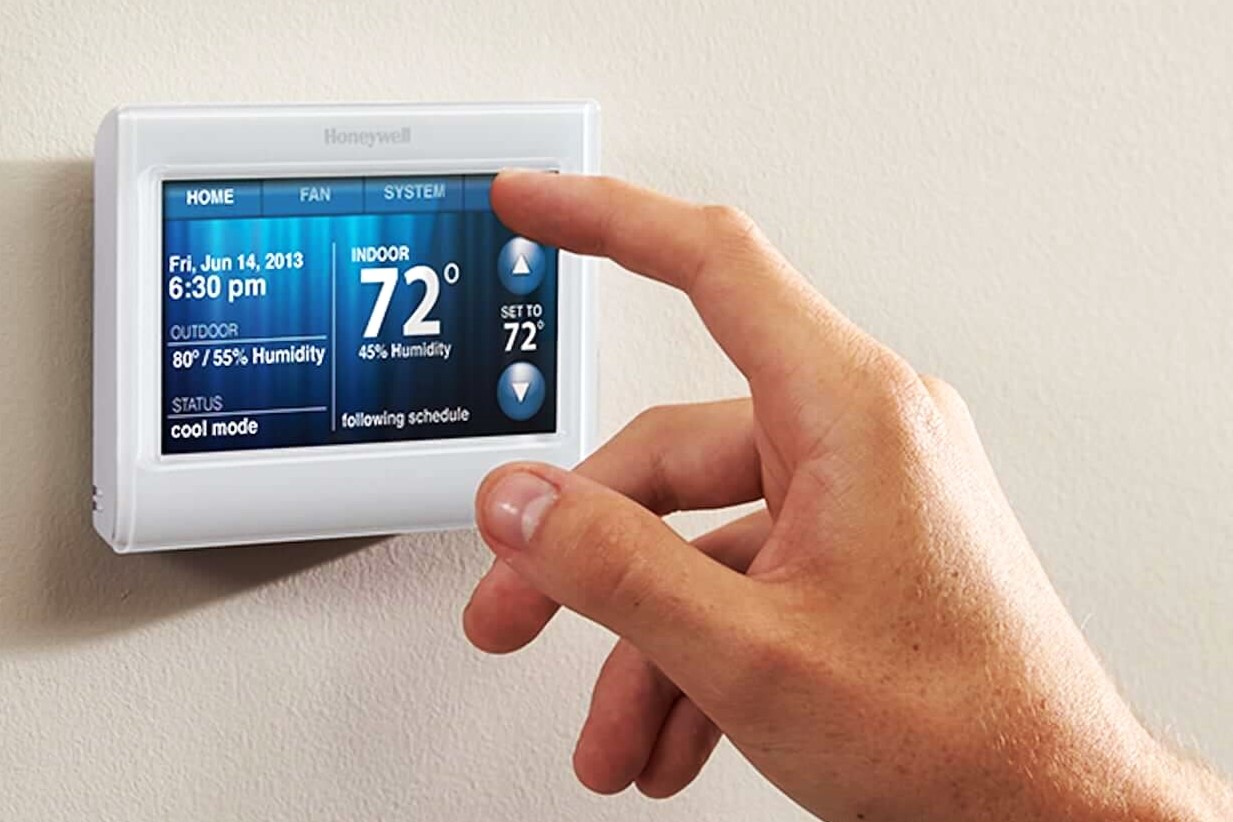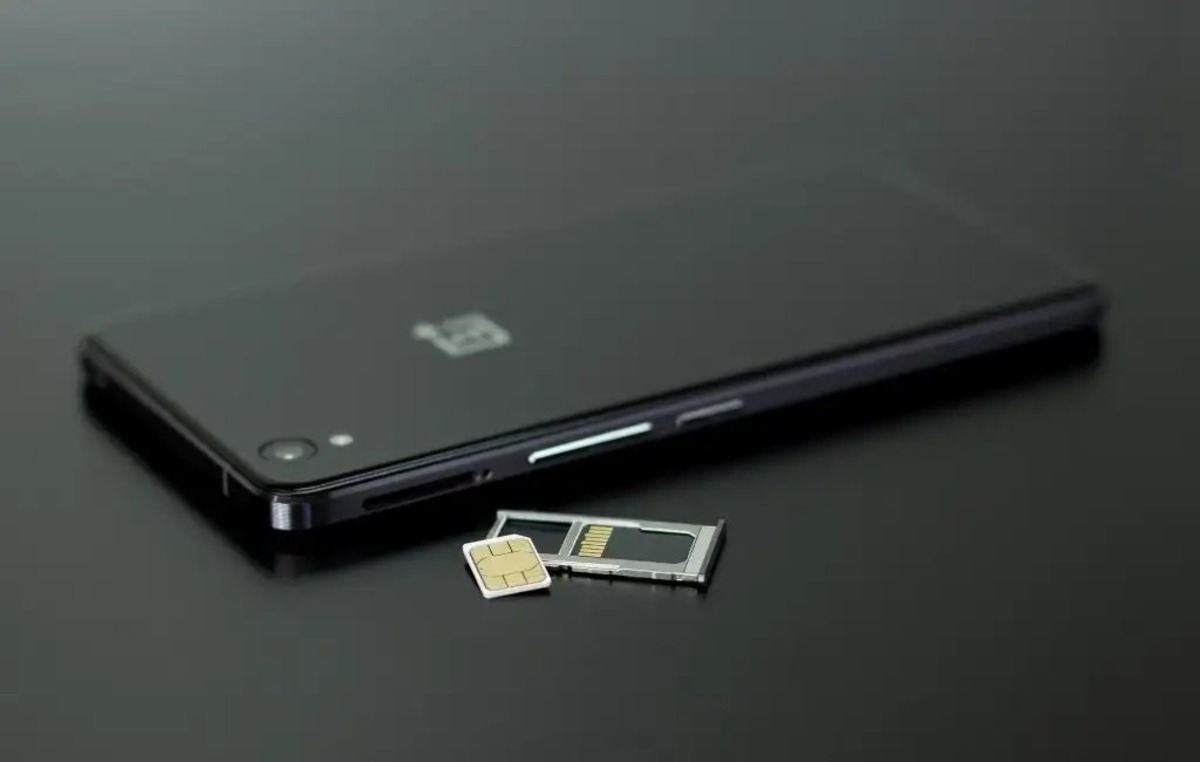Home>Automotive>Shocking Reason Your Car Won’t Start: Corroded Battery Terminals


Automotive
Shocking Reason Your Car Won’t Start: Corroded Battery Terminals
Published: January 5, 2024
Discover the shocking reason why your car won't start and learn how corroded battery terminals can affect your automotive experience.
(Many of the links in this article redirect to a specific reviewed product. Your purchase of these products through affiliate links helps to generate commission for Noodls.com, at no extra cost. Learn more)
Table of Contents
Introduction
Your car won't start. You're running late, and frustration starts to set in. You turn the key, but nothing happens. It's a scenario that many of us have experienced, and the culprit is often corroded battery terminals. This seemingly small issue can cause significant inconvenience and even leave you stranded at the most inconvenient times.
Corrosion on battery terminals is a common problem that can affect any vehicle, regardless of make or model. It occurs when the metal terminals of the battery react with the surrounding air, moisture, and other elements. This chemical reaction leads to the formation of a powdery, bluish-white substance on the terminals, inhibiting the flow of electricity and compromising the performance of your vehicle's electrical system.
Understanding the causes, signs, and solutions for corroded battery terminals is crucial for every car owner. By gaining insight into this issue, you can take proactive steps to prevent it and address it effectively when it arises. In this article, we'll delve into the shocking reasons why your car won't start due to corroded battery terminals, identify the signs to look out for, explore the impact of this issue on your vehicle, and provide practical solutions to rectify and prevent it. So, let's dive in and unravel the mysteries of corroded battery terminals, empowering you to keep your car running smoothly and reliably.
Understanding Corroded Battery Terminals
Corrosion on battery terminals is a pervasive issue that arises from chemical reactions between the metal terminals and external elements. When the metal terminals, typically made of lead, react with moisture, airborne contaminants, and sulfuric acid vapors from the battery, a chemical process known as electrolysis occurs. This process leads to the formation of a powdery, bluish-white substance on the terminals, commonly referred to as corrosion or battery terminal gunk.
The corrosion process is accelerated by factors such as high temperatures, humidity, and poor maintenance practices. In regions with high humidity or where road salt is used during winter, the likelihood of corrosion increases. Additionally, overcharging of the battery, which can occur due to a faulty charging system, can lead to the release of excessive hydrogen gas, further promoting corrosion.
The accumulation of corrosion on the battery terminals creates a barrier that inhibits the flow of electricity. This impedes the proper functioning of the electrical system in the vehicle. The corrosion not only hinders the transfer of power from the battery to the starter but also affects the overall performance of the vehicle's electrical components, including the lights, radio, and other accessories.
Furthermore, the presence of corrosion on the terminals can lead to voltage fluctuations and electrical resistance, which may trigger malfunctions in the vehicle's electronic control modules. This can result in erratic behavior of various systems, including the engine management system and transmission control unit, potentially leading to drivability issues and warning lights appearing on the dashboard.
Understanding the nature and causes of corroded battery terminals is essential for car owners. By recognizing the factors that contribute to this issue, individuals can take proactive measures to mitigate its impact and ensure the reliable operation of their vehicles. In the subsequent sections, we will explore the signs that indicate the presence of corroded battery terminals, the ramifications of this issue on the vehicle, and effective strategies for addressing and preventing it.
Signs of Corroded Battery Terminals
Identifying the signs of corroded battery terminals is crucial for maintaining the optimal performance of your vehicle. While the presence of corrosion may not always be immediately visible, several indicators can alert you to this issue. By recognizing these signs, you can take timely action to address corroded battery terminals before they lead to more severe electrical and mechanical problems in your car.
-
Difficulty Starting the Engine: One of the most common signs of corroded battery terminals is difficulty starting the engine. When you turn the key, you may notice that the engine cranks slowly or fails to start altogether. This sluggish response is often attributed to the hindered flow of electricity caused by corrosion on the battery terminals.
-
Intermittent Electrical Issues: Corroded battery terminals can cause intermittent electrical problems in your vehicle. You may experience sporadic issues with the lights, radio, power windows, or other electrical components. These irregular malfunctions can be a result of the inconsistent transfer of power due to the presence of corrosion.
-
Diminished Battery Power: If you notice that your battery seems to be losing power more quickly than usual, it could be a sign of corroded terminals. The restricted flow of electricity due to corrosion can lead to accelerated depletion of the battery's charge, resulting in diminished battery performance.
-
Visible Corrosion on Terminals: In some cases, you may visually observe the presence of corrosion on the battery terminals. The terminals may appear to have a powdery, bluish-white substance accumulating on them. This visible corrosion is a clear indication that the terminals require attention and maintenance.
-
Corrosion-Related Warning Lights: Modern vehicles are equipped with onboard diagnostic systems that can detect irregularities in the electrical system. If your vehicle's dashboard displays warning lights related to the battery, charging system, or electrical components, it could be a signal of corroded terminals affecting the overall electrical performance.
-
Foul Smell or Fumes: In advanced stages of corrosion, you may detect a foul smell or fumes emanating from the battery area. This can indicate that the corrosion has progressed significantly and requires immediate attention to prevent further damage to the electrical system.
By remaining vigilant for these signs, you can promptly address corroded battery terminals, ensuring the consistent and reliable operation of your vehicle's electrical system. In the following section, we will explore the impact of corroded battery terminals on your vehicle and effective strategies for rectifying this issue.
The Impact of Corroded Battery Terminals
The presence of corroded battery terminals can have far-reaching implications for the overall performance and reliability of your vehicle. This seemingly minor issue can lead to significant disruptions and potential hazards if left unaddressed. Understanding the impact of corroded battery terminals is essential for every car owner, as it underscores the importance of proactive maintenance and timely intervention to safeguard the integrity of the electrical system.
Electrical System Dysfunction
Corroded battery terminals impede the flow of electricity from the battery to the vehicle's electrical components, including the starter, lights, ignition system, and various accessories. This hindered electrical flow can result in erratic behavior of these components, leading to issues such as slow cranking of the engine, intermittent power fluctuations, and malfunctioning electronic systems. As a consequence, the vehicle's overall drivability and operational stability may be compromised, posing safety risks and inconveniences for the driver and passengers.
Battery Degradation
The presence of corrosion on the battery terminals can accelerate the degradation of the battery itself. The restricted flow of electricity due to corroded terminals can lead to increased strain on the battery, causing it to deplete its charge more rapidly. This accelerated depletion can diminish the battery's lifespan and overall performance, ultimately necessitating premature replacement and incurring additional expenses for the vehicle owner.
Risk of Electrical Fires
In severe cases, the accumulation of corrosion and subsequent voltage fluctuations on the battery terminals can pose a risk of electrical fires. The compromised electrical connections and increased resistance due to corrosion can generate heat, potentially leading to the ignition of flammable materials in the vicinity of the battery. This presents a serious safety hazard and underscores the critical need to address corroded battery terminals promptly and effectively.
Malfunctioning Electronic Control Modules
Corroded battery terminals can impact the vehicle's electronic control modules, including the engine management system and transmission control unit. The irregular flow of electricity and voltage fluctuations resulting from corrosion can interfere with the proper functioning of these essential control units, leading to performance issues, warning lights on the dashboard, and potential drivability concerns. Addressing corroded terminals is crucial to prevent disruptions in the vehicle's electronic systems and ensure optimal operational efficiency.
Overall Reliability and Safety
Ultimately, the impact of corroded battery terminals extends to the overall reliability and safety of the vehicle. Electrical malfunctions, diminished battery performance, and potential safety hazards stemming from corrosion underscore the critical significance of maintaining clean and well-maintained battery terminals. By addressing and preventing corrosion, car owners can uphold the dependability and safety of their vehicles, minimizing the risk of unexpected breakdowns and electrical hazards.
Understanding the multifaceted impact of corroded battery terminals underscores the imperative of proactive maintenance and diligent attention to the vehicle's electrical system. In the subsequent sections, we will explore effective strategies for rectifying corroded battery terminals and implementing preventive measures to mitigate the recurrence of this issue.
How to Fix Corroded Battery Terminals
Addressing corroded battery terminals is essential for restoring the optimal electrical performance of your vehicle and mitigating potential safety hazards. By implementing effective strategies to rectify this issue, car owners can ensure the reliable operation of their vehicles and prevent the escalation of electrical malfunctions. Here are practical steps to fix corroded battery terminals:
-
Safety Precautions: Before proceeding with any maintenance on the battery terminals, it is crucial to prioritize safety. Ensure that the vehicle is turned off, and the ignition key is removed. Additionally, wear protective gloves and eye goggles to safeguard yourself from potential exposure to corrosive substances and electrical hazards.
-
Inspection: Begin by visually inspecting the battery terminals for signs of corrosion. If visible corrosion is present, it is essential to address it promptly. The terminals may appear coated with a powdery, bluish-white substance, indicating the accumulation of corrosion.
-
Cleaning the Terminals: Prepare a solution of baking soda and water or a specialized battery terminal cleaner. Using a wire brush or a dedicated terminal cleaning tool, gently scrub the battery terminals to remove the corrosion buildup. Take care to thoroughly clean both the positive (+) and negative (-) terminals, as well as the cable clamps.
-
Rinsing and Drying: After cleaning the terminals, rinse them with water to remove any residual cleaning solution or corrosion. Once rinsed, dry the terminals and cable clamps thoroughly using a clean, lint-free cloth. It is essential to ensure that the terminals are completely dry before proceeding to the next step.
-
Applying Terminal Protection: To prevent future corrosion, consider applying a thin coat of petroleum jelly or a specialized battery terminal protectant on the cleaned terminals. This protective layer acts as a barrier, inhibiting the formation of new corrosion and preserving the integrity of the electrical connections.
-
Reconnecting and Testing: Once the terminals are cleaned and protected, reconnect the battery cables to the terminals, ensuring a secure and snug fit. After reconnection, conduct a test to verify that the electrical system functions properly. Attempt to start the engine and check the operation of various electrical components to confirm that the issue has been resolved.
By following these steps, car owners can effectively address corroded battery terminals, restoring the electrical integrity of their vehicles and minimizing the risk of electrical malfunctions. Additionally, implementing preventive measures to inhibit the recurrence of corrosion is essential for maintaining the long-term reliability of the electrical system in the vehicle. In the subsequent section, we will explore proactive strategies for preventing corrosion on battery terminals, empowering car owners to safeguard the electrical performance of their vehicles.
Preventing Corrosion on Battery Terminals
Preventing corrosion on battery terminals is a proactive approach that can significantly contribute to the long-term reliability and performance of your vehicle's electrical system. By implementing preventive measures, car owners can mitigate the recurrence of corrosion, ensuring consistent electrical functionality and minimizing the need for frequent maintenance. Here are effective strategies for preventing corrosion on battery terminals:
-
Terminal Protection Products: Utilizing specialized terminal protectants, such as anti-corrosion sprays or terminal grease, can create a protective barrier on the battery terminals. These products are formulated to resist moisture and inhibit the formation of corrosive substances, thereby preserving the integrity of the electrical connections. Applying a thin layer of terminal protectant after cleaning the terminals can fortify their resistance to corrosion.
-
Proper Terminal Tightening: Ensuring that the battery terminals are securely tightened can minimize the risk of corrosion. Loose terminals can lead to increased electrical resistance and movement, which can exacerbate corrosion. Periodically inspect and tighten the terminals to maintain a secure and stable connection, reducing the likelihood of corrosion formation.
-
Regular Maintenance: Incorporating routine battery and terminal maintenance as part of your vehicle care regimen is essential for preventing corrosion. Regularly inspecting the terminals for any signs of corrosion, cleaning them when necessary, and applying terminal protectants can preemptively address potential corrosion issues before they escalate. This proactive approach can preserve the electrical conductivity of the terminals and extend their longevity.
-
Environmental Protection: Shielding the battery and terminals from environmental factors that promote corrosion, such as moisture and road salt, can aid in prevention. Installing terminal covers or protective sprays designed to repel moisture and contaminants can safeguard the terminals from external elements, reducing the likelihood of corrosion formation.
-
Battery Testing and Inspection: Periodically testing the battery and conducting comprehensive inspections can identify potential issues that may contribute to corrosion. Monitoring the battery's charge, voltage levels, and overall health can enable early detection of irregularities, allowing for timely intervention to address any factors that may lead to corrosion on the terminals.
-
Professional Maintenance: Seeking professional maintenance and inspection services for the vehicle's electrical system, including the battery and terminals, can provide thorough assessments and preventive treatments. Professional technicians can conduct specialized cleaning, apply corrosion inhibitors, and offer tailored recommendations to prevent corrosion and preserve the electrical integrity of the vehicle.
By integrating these preventive measures into your vehicle maintenance routine, you can effectively mitigate the risk of corrosion on battery terminals, ensuring the sustained reliability and performance of the electrical system. Proactive prevention is key to safeguarding the integrity of the terminals and minimizing the potential disruptions caused by corrosion.
Incorporating these strategies empowers car owners to maintain the electrical functionality of their vehicles, promoting a dependable and resilient electrical system. By taking a proactive stance against corrosion, you can uphold the longevity and efficiency of your vehicle's electrical components, enhancing the overall driving experience and minimizing the need for reactive maintenance due to terminal corrosion.
Conclusion
In conclusion, the impact of corroded battery terminals on the performance and reliability of a vehicle's electrical system cannot be overstated. This seemingly inconspicuous issue has the potential to disrupt the smooth operation of the vehicle, leading to difficulties in starting the engine, intermittent electrical malfunctions, diminished battery performance, and even safety hazards. By understanding the causes, signs, and implications of corroded battery terminals, car owners can take proactive measures to address and prevent this issue effectively.
The signs of corroded battery terminals, including difficulty starting the engine, intermittent electrical issues, diminished battery power, visible corrosion on terminals, corrosion-related warning lights, and foul smells or fumes, serve as crucial indicators for prompt intervention. Recognizing these signs empowers car owners to identify and address corroded terminals before they escalate into more severe electrical and mechanical problems.
Furthermore, the multifaceted impact of corroded battery terminals, encompassing electrical system dysfunction, battery degradation, risk of electrical fires, malfunctioning electronic control modules, and overall reliability and safety concerns, underscores the critical importance of maintaining clean and well-maintained battery terminals. By rectifying corroded terminals through thorough cleaning, application of protective measures, and conducting regular inspections, car owners can ensure the consistent and reliable operation of their vehicle's electrical system.
Moreover, implementing preventive strategies, such as utilizing terminal protection products, ensuring proper terminal tightening, incorporating regular maintenance, environmental protection, battery testing and inspection, and seeking professional maintenance services, is paramount for mitigating the recurrence of corrosion and preserving the longevity of the battery terminals.
By taking a proactive stance against corrosion, car owners can uphold the dependability and safety of their vehicles, minimizing the risk of unexpected breakdowns and electrical hazards. The diligence in addressing and preventing corroded battery terminals contributes to the sustained reliability and performance of the vehicle's electrical components, enhancing the overall driving experience and minimizing the need for reactive maintenance due to terminal corrosion.
In essence, the shocking reasons why a car won't start due to corroded battery terminals highlight the imperative of proactive maintenance, timely intervention, and preventive measures to safeguard the integrity of the electrical system. By staying attentive to the signs of corrosion, implementing effective cleaning and protective measures, and integrating preventive strategies into routine maintenance, car owners can ensure the consistent and reliable operation of their vehicles, mitigating the disruptions and hazards posed by corroded battery terminals.
